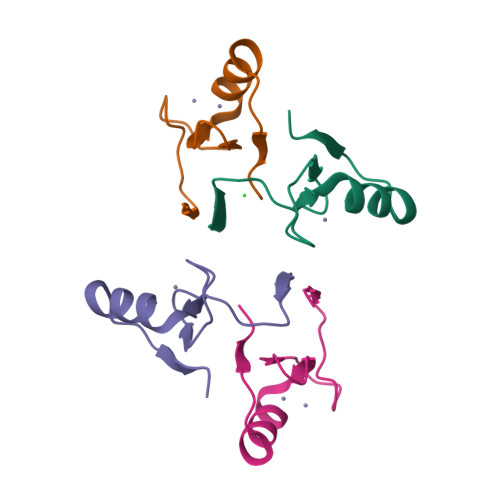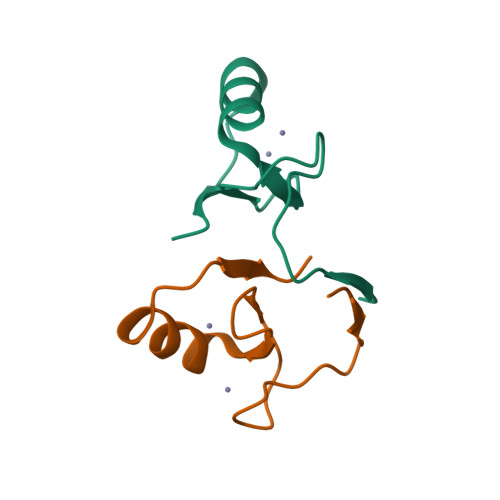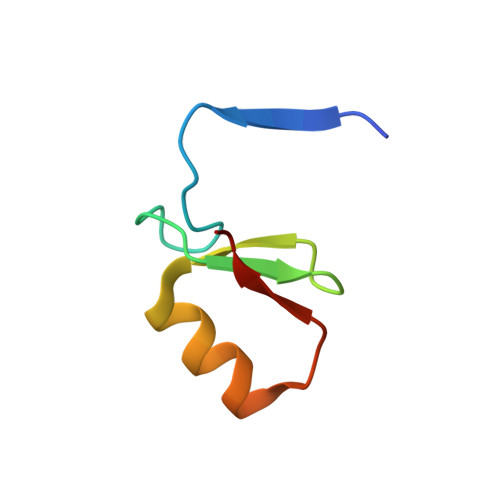B1 oligomerization regulates PML nuclear body biogenesis and leukemogenesis.
Li, Y., Ma, X., Chen, Z., Wu, H., Wang, P., Wu, W., Cheng, N., Zeng, L., Zhang, H., Cai, X., Chen, S.J., Chen, Z., Meng, G.(2019) Nat Commun 10: 3789-3789
- PubMed: 31439836
- DOI: https://doi.org/10.1038/s41467-019-11746-0
- Primary Citation of Related Structures:
6IMQ - PubMed Abstract:
ProMyelocyticLeukemia (PML) protein can polymerize into a mega-Dalton nuclear assembly of 0.1-2 μm in diameter. The mechanism of PML nuclear body biogenesis remains elusive. Here, PML RBCC is successfully purified. The gel filtration and ultracentrifugation analysis suggest a previously unrecognized sequential oligomerization mechanism via PML monomer, dimer, tetramer and N-mer. Consistently, PML B1-box structure (2.0 Å) and SAXS characterization reveal an unexpected networking by W157-, F158- and SD1-interfaces. Structure-based perturbations in these B1 interfaces not only impair oligomerization in vitro but also abolish PML sumoylation and nuclear body biogenesis in HeLa Pml-/- cell. More importantly, as demonstrated by in vivo study using transgenic mice, PML-RARα (PR) F158E precludes leukemogenesis. In addition, single cell RNA sequencing analysis shows that B1 oligomerization is an important regulator in PML-RARα-driven transactivation. Altogether, these results not only define a previously unrecognized B1-box oligomerization in PML, but also highlight oligomerization as an important factor in carcinogenesis.
Organizational Affiliation:
State Key Laboratory of Medical Genomics, Shanghai Institute of Hematology, Rui Jin Hospital affiliated to Shanghai Jiao Tong University School of Medicine, 197 Ruijin Er Road, Shanghai, 200025, China.



















